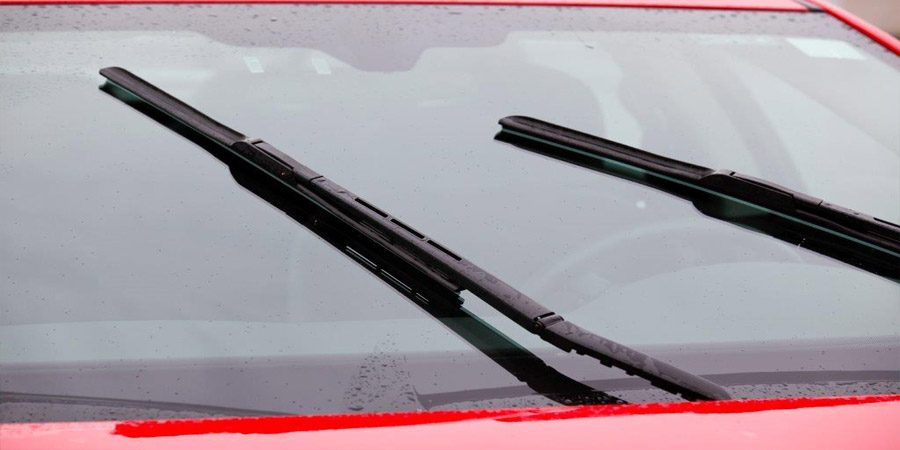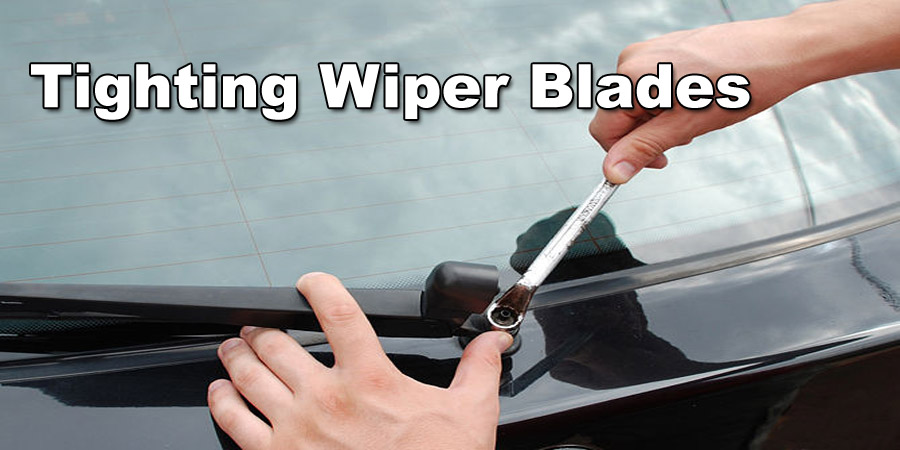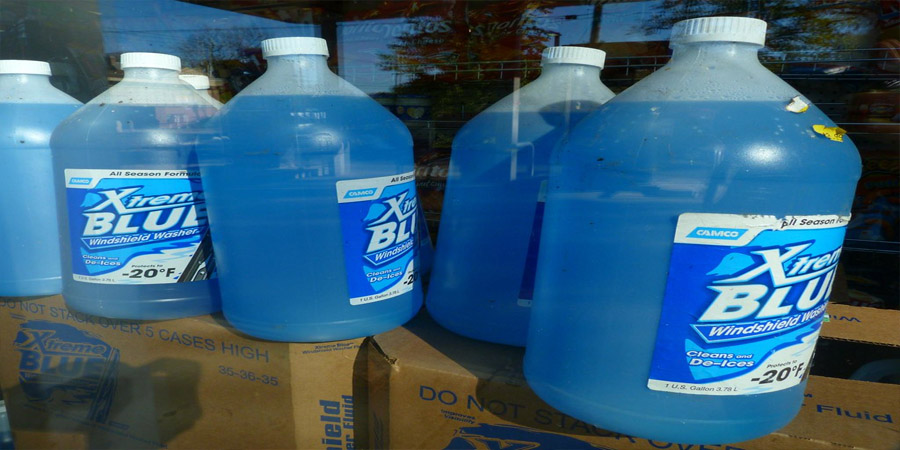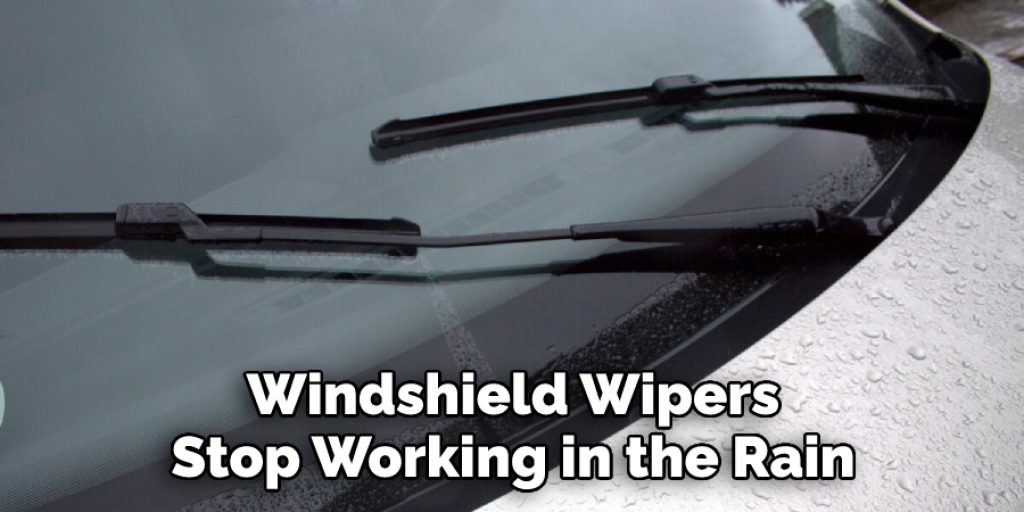How to Fix a Windshield Wiper That Won’t Move
Windshield wipers are necessary to keep your windshield clear of rain and snow. If your wiper blades don’t move, it can be inconvenient when you need them most. The problem usually is the wiper cable or linkage, which needs lubricating or replacing. This article will show how to fix a windshield wiper that won’t move, so you’re always prepared for inclement weather!

Required Tools:
- A screwdriver
- Socket wrench with a universal joint (if needed)
- Phillips head screwdriver
- Pliers
- WD40 or other lubricants
Instructions: How to Fix a Windshield Wiper That Won’t Move
Step One: Check for Obstruction in the Wiper Cable
Check your wiper blade and cable for any obstructions. If you find any clogs, clear them with a screwdriver. Then, check whether the blade is frozen using WD40 or another lubricant. If your wipers worked for a little bit but then stopped again after you cleared the obstruction and applied lubrication, it’s likely that your linkage is being affected.
Step Two: Check for Broken Linkage or Worn Cables
If there is no evidence of an obstruction in the blade or cable, check to see if they are worn out by looking them up close. If the cables are worn out and need to be replaced, you’ll see that they’re frayed or shredded in some spots – though this can happen while driving, too. Replace them if needed with a new wiper cable of your choosing.
Step Three: Tighten Mounting Bracket Screws
If you’re still having a problem and the linkage is fine, you may need to tighten your wiper blade’s mounting bracket screws. This will help ensure that it’s more securely attached to its hinges on one side of the windshield and its connections at both ends.

Step Four: Recheck Wipers for Proper Hinge Alignment
If you’ve changed the wiper blades and tightened the screws, but they still won’t move, check to ensure that their hinges are aligned properly. Just like a door or window can get stuck if it’s not hung correctly, your wipers can also be off-kilter.
Step Five: Consider Replacing Entire Wipers
If you’ve tried everything and your wipers still won’t move, it might be time to replace the entire wiper system. That includes replacing not just the blades but also the windshield washer pump, arm linkage, or electric motor.
Step Six: Reinstall the Wipers
Once you’ve replaced one or more of these parts, it’s time to reinstall your new wiper system. You’ll need a screwdriver and pliers to do this job properly, but if all goes well, then in no time, your wipers should be moving again so that they can keep rainwater from getting in your car and ruining it.
Step Seven: Test Your Wipers
Now that your new wipers are installed, it’s time to test them. Make sure they’re moving correctly, and at the speed you like. You can adjust this by changing how much pressure you apply with each swipe of the wiper blade.
If you tend to drive through rain more often than not, you might want to go with a higher speed. Keep in mind that it may take some time for your wipers to adjust to their new settings, so you’ll need to perform this test at least once more before they’re completely adjusted.
6 Reasons Why Your Windshield Wiper Won’t Move
There are several reasons why your windshield wipers may stop moving. But we will talk about the most important one that is common. Let’s explore the potential reasons:
1)The windshield wiper is out of fluid:
Windshield wiper fluid is a necessary component for the windshield wipers to work. If there’s no liquid in them, they won’t function properly and will stop working altogether if it runs out of fluid. If it doesn’t move when you pump the lever, your windshield wiper fluid might be below. Fill up with a little more fluid and try again.

2) The blades are worn out:
If the wipers keep stopping on their own, or if they’re getting stuck at one point in wiping motion, then often that means the blades need to be replaced.
3) The blade arm is off the windshield:
If one or both wipers don’t wipe, they might not just be low fluid; sometimes, they’re positioned incorrectly on your car. You may need to adjust them to cover more of the window and move straight across its whole surface.
4) The rubber part of the blade’s edge has snapped off:
If you don’t see a rubber strip on the bottom of your blades, it may be because they’ve lost their grip and snapped off. This is usually caused by an excess of heat or cold exposure, so ensure that your wipers are kept in a good environment to avoid this problem.
5) The wiper arm is broken:
If you’re seeing normal movement but not enough wiping, this might be because the wiper arm is broken. You may need to replace it if your blades are still functioning correctly. Otherwise, they won’t do much good at all.
6) The motor that moves the blades has burned out:
If you hear a clicking or grinding sound when your wipers turn on, it could be because the motor that moves them has burned out. Often this is an easy fix. All you need to do is replace the faulty piece, and they’ll be good as new.
How to Prevent Windshield Wiper From Stop Working
1) Check the wiper fluid level. If possible, you’ll want to fill it up with a mix of water and windshield washer solution. Adding more solvent will only worsen things, so use just enough to keep your blades wet.
2) Ensure the wipers are in good condition (free of cracks or tears). Blades can be replaced, but you may need to replace the entire assembly if there’s damage on either side of your car doors where they’re connected.
3) Clean off any debris from around the blade as dirt buildup can stop them from properly wiping down your window during inclement weather like rainstorms or snowstorms.

4) Lubricate hinges using silicone spray for added protection against corrosion caused by salt and sand.
5) Replace, clean, and lubricate your wiper blades at least once a year to ensure they’re in tip-top shape during the harsh winter.
Frequently Asked Questions on How To Fix A Windshield Wiper That Won’t Move
Q: How to Check Your Windshield Wipers:
A: If you’re unsure which wipers are the best fit, it’s a good idea to consult your car manual. This will also help with potential compatibility issues such as power arms and blade size. Most manuals should have detailed instructions on how to check if your blades are in working order or need an upgrade!
Q: How to Clean Your Car’s Windshield Wipers
A: Windex is the traditional way of cleaning windshield wipers, but it can leave behind streaks and residue. Many people now use newspaper or paper towels with water instead, which allows for a more thorough clean without irritating chemicals or leaving any stains. Be sure you are using distilled water; tap water often has mineral content that leaves spots on your wiper blades.
Q: How Can Poor Weather Conditions Affect Your Windshield Wipers?
A: Depending on the outside weather conditions, there are a few things that can cause windshield wipers to malfunction. If you live in an area where it rains or snows often, your blades will need regular replacement every six months as they wear down more quickly due to exposure and constant use. Other factors like the extreme heat and cold can also affect their function, reducing performance over time.
Q: How Often Should You Change Your Windshield Wipers?
A: It’s always best to change your wiper blades at least once yearly for optimum safety and visibility, no matter the climate you reside in! Many now choose synthetic rubber blade covers that last longer than traditional metal blades while withstanding even the worst conditions.
Q: What to Do if Your Windshield Wipers Stop Working in the Rain?
A: If your windshield wipers stop working in the rain, don’t panic! All you need to do is turn off any parking aids or features that make them not work. Then go into “wipers” on your car dashboard and make sure they’re set to ON, then push each wiper blade up until water starts running down from it normally once more.
You Can Check It Out to Spray Windshield Wiper Fluid

Conclusions
In times like these, you need to know how to fix a windshield wiper that won’t move. Luckily, we’re here with the step-by-step instructions on what to do if your wipers have stopped working properly and how to fix them!
This is one of those things that can be quickly fixed by any DIYer at home or in their garage using just some basic tools. We’ve made it easy for you, so there’s no excuse not to try this yourself. Get ready for summer, and don’t forget about safety while driving on wet roads by fixing your windshield wipers today!
You may read – How To Fix Bluetooth Lag In Car




